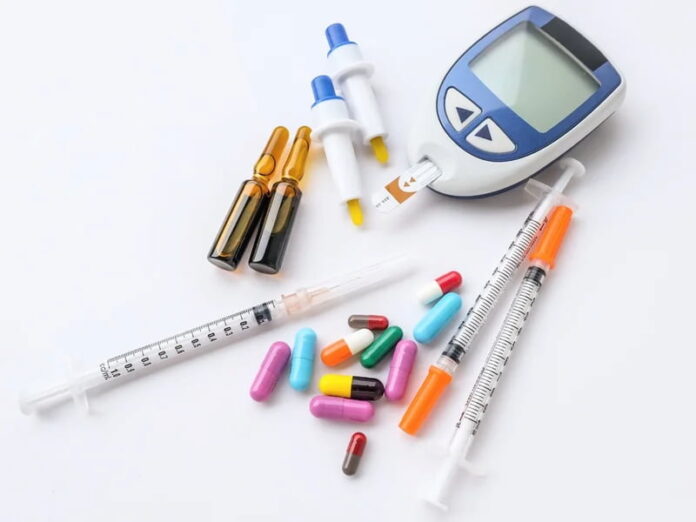When it comes to managing type 2 diabetes, there are various treatment options available, including medications like Rybelsus (semaglutide). While Rybelsus can be an effective therapy choice, it’s important to understand the potential side effects associated with its use and how long they may last. In this article, we will explore the duration of Rybelsus side effects, providing you with valuable insights to navigate your road to recovery.
Understanding Rybelsus and Its Benefits:
Rybelsus, also known as semaglutide, is an oral medication prescribed for the management of type 2 diabetes. It belongs to a class of drugs called glucagon-like peptide-1 receptor agonists (GLP-1 RAs), which work by stimulating the release of insulin and reducing glucose production in the liver. Rybelsus offers several benefits for individuals with diabetes, including improved blood sugar control, potential weight loss, and reduced risk of cardiovascular complications.
Common Side Effects of Rybelsus:
Like any medication, Rybelsus can cause side effects, although their occurrence and severity may vary among individuals. It’s important to note that not everyone experiences side effects, and some may only encounter mild symptoms. Common side effects of Rybelsus may include nausea, diarrhea, constipation, abdominal pain, decreased appetite, and headache. These side effects are generally temporary and tend to improve over time as your body adjusts to the medication.
Duration of Rybelsus Side Effects:
The duration of Rybelsus side effects can vary from person to person. In most cases, the initial side effects may occur during the first few weeks of starting the medication and gradually subside over time. Nausea, which is one of the common side effects of Rybelsus, usually improves within a few weeks as your body becomes accustomed to the medication. If you experience persistent or severe nausea, it’s important to consult your healthcare provider for further guidance.
Similarly, other side effects like diarrhea, constipation, and abdominal pain may also resolve within a few weeks. However, if these symptoms persist or become bothersome, it’s recommended to discuss them with your healthcare provider. They can provide recommendations on managing these side effects or adjust your medication dosage if necessary.
It’s worth noting that while the initial side effects may diminish, some individuals may experience long-term side effects with continued use of Rybelsus. These can include changes in appetite, weight loss, or gastrointestinal discomfort. If you have concerns about the duration or persistence of any side effects, it’s important to communicate with your healthcare provider for appropriate evaluation and management.
Managing Rybelsus Side Effects:
To help manage the side effects of Rybelsus, there are several strategies you can consider:
1- Take Rybelsus with food: Taking the medication with a meal can help reduce the occurrence of gastrointestinal side effects like nausea, diarrhea, or abdominal pain.
2- Stay hydrated: Drinking an adequate amount of water throughout the day can help alleviate constipation, a potential side effect of Rybelsus.
3- Follow a balanced diet: Maintaining a healthy and balanced diet can support overall digestive health and help manage any changes in appetite or weight that may occur while taking Rybelsus.
4- Openly communicate with your healthcare provider: If you experience any side effects that are concerning or persistent, it’s crucial to discuss them with your healthcare provider. They can provide guidance, reassurance, or make necessary adjustments to your treatment plan.
Conclusion:
Rybelsus is a valuable medication for managing type 2 diabetes, offering several benefits in terms of blood sugar control and potential weight loss. While it may cause side effects, it’s important to know that do rybelsus side effects go away over time. By understanding the potential duration of Rybelsus side effects and implementing appropriate management strategies, you can navigate your road to recovery with confidence. Remember to consult with your healthcare provider for personalized guidance and support throughout your treatment journey.
Did you find this helpful? Check out our other helpful articles on our website.
Read Also
- The Future of Men’s Health: Why Telehealth Is Here to StayTelehealth isn’t just a pandemic trend that faded into the background. For Australian men, it has become one of the most practical, time-saving, and stress-free ways to manage everyday health — and it’s shaping the future of how we access care. Platforms like DOCTO, an Australian online doctor and specialist telehealth service, are leading the… Read more: The Future of Men’s Health: Why Telehealth Is Here to Stay
- How to Build a Simple, Clean Skincare Routine ?You don’t need a complicated skincare routine. It doesn’t have to be something that requires twenty different products and confusing steps. Your routine works well with just a few high-quality clean ingredients. The beauty industry keeps pushing more products, but your skin actually needs less. You only need a simple approach to get better results… Read more: How to Build a Simple, Clean Skincare Routine ?
- How Preventive Dental Care Supports Overall HealthHave you ever wondered how a simple dental checkup could impact your entire body? Oral health is more than just a bright smile. Studies show that poor dental habits can contribute to serious health problems. Gum disease and tooth decay are linked to heart disease, diabetes, and infections. Yet, many people overlook preventive dental care.… Read more: How Preventive Dental Care Supports Overall Health
- Seeing Clearly in a High-Tech World: A Deep Dive into Advanced Vision Care ServicesProtecting your eyesight isn’t optional—it’s essential. Modern eye care has evolved far beyond basic exams, offering advanced diagnostics, personalized treatments, and surgical innovations that keep vision sharp for life. A leading example is Intermountain Eye Center, home to specialists like Dr Fishburn Boise, where patients receive comprehensive, high-level vision care designed to preserve long-term eye… Read more: Seeing Clearly in a High-Tech World: A Deep Dive into Advanced Vision Care Services
- Why the Keto Diet Works for Some People—and Fails Dramatically for Others: An Ayurvedic Breakdown for Modern HealthcareThe keto diet has dominated weight-loss culture for years. For some people, it produces rapid fat loss, stable energy, and improved mental clarity. For others—especially those who gain weight easily—it leads to burnout, digestive distress, rebound weight gain, high cholesterol, and a metabolism that feels slower than before. Healthcare often frames this as a discipline… Read more: Why the Keto Diet Works for Some People—and Fails Dramatically for Others: An Ayurvedic Breakdown for Modern Healthcare
- How to Choose the Best Assisted Living Facility for SeniorsAre you looking for the right assisted living facility for a senior loved one? Choosing a place can feel overwhelming. There are many factors to consider, from care services to the environment. Safety, comfort, and social opportunities play important roles in daily life. Each senior has unique needs and preferences that must be met. Understanding… Read more: How to Choose the Best Assisted Living Facility for Seniors
- Burn Smart, Not Hard; Shape Burn: Clean Protein for Weight ManagementYou want to feel light, strong, and confident. You don’t want crash diets or fake promises. You need a plan that works with your body, not against it. That’s where Shape Burn comes in. You can burn fat without losing strength. You can eat better and stay full. You can manage weight in a way… Read more: Burn Smart, Not Hard; Shape Burn: Clean Protein for Weight Management
- Creatine Basics: How Much Is 5g, How Much Water You Need, and Whether Pills or Powder Work BetterIf you’ve ever walked into a supplement aisle or scrolled through fitness TikTok, you’ve probably seen people talking about creatine — usually with a shaker bottle in hand and promises of better workouts and faster gains. And honestly? They’re not wrong. Creatine is one of the most researched and effective supplements for muscle strength, recovery,… Read more: Creatine Basics: How Much Is 5g, How Much Water You Need, and Whether Pills or Powder Work Better









